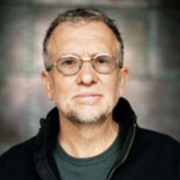
John Toon
John Toon began his movie career at primary school, with an 8mm remake of D-Day epic The Longest Day, filmed in a Canterbury pond. After working in a Dunedin photographic lab on a school holiday job, Toon joined the NZ Broadcasting Corporation as a trainee editor. He soon segued into newsreel camera work, where his interests lay.
In the 70s Toon spent four years working in England, where he continued honing his craft as an assistant cameraman on a range of TV productions, from BAFTA-winning homelessness doco Johnny Go Home to multi-camera dramas.
Toon returned to the NZBC in 1975, this time as a senior cameraman. His biggest project in this period was shooting the final three episodes of historical epic The Governor.
Toon spent time directing current affairs for Close Up. Meanwhile his camera work saw him flying over Mount Cook in a balloon (Challenge: Knocking on Heaven's Door), climbing beside Graeme Dingle (Little North Face), and documenting Bangladeshi refugees trapped on an Indian island (Parvin of Chandpara).
In the 80s, Toon left TVNZ to begin an extended yin-yang career shooting feature films, and directing and shooting commercials. After working as a second unit cameraman on two features, and filming 45 minute Melanie Reid short Hooks and Feelers (1983), he was invited to operate the camera on feature drama Heart of the Stag, working under director of photography James Bartle. He then found himself as second unit director during the challenging Raratongan shoot for turtle tale The Silent One.
Toon made his feature debut as director of photography in 1985 with acclaimed low budget drama Kingpin, centered on three inmates of a teen borstal. Toon brought a naturalistic style to the film, much of it shot handheld using his own lightweight Aaton camera. In the same period Toon directed and shot Line Honours, documenting construction of Sir Peter Blake's Whitbread yacht Lion New Zealand, and helmed a doco about Duran Duran singer Simon Le Bon's adventures on yacht Drum.
After Kingpin, the next decade was spent directing commercials for companies Partners (of which Toon was a partner) and Silverscreen. Toon attributes this period as especially beneficial for his cinematography, partly thanks to the quality of the Australian cinematographers he often worked with.
Toon's time in commercials is evident in his bold and colourful work for acclaimed 1993 short Stroke. The near wordless film was written and directed by Christine Jeffs, later to become Toon's partner.
Toon then returned to features as director of photography on cross-cultural love story Broken English. The film's look and feel combined melodrama and realism: a portable custom-made fluorescent tube, dubbed the 'Toon light', enabled glamorous close-ups of the film's star, screen newcomer Aleksandra Vujcic.
In cinematography-in-NZ book Shot in New Zealand, writer Duncan Petrie argues that the combination of "drab and ordinary urban locations with more heightened or unusual visual elements gives Broken English a kind of fairy-tale quality". The movie's international success resulted in more feature offers, but few excited him, and he continued to concentrate on commercials.
Five years later Toon brought his stylish and evocative work to Rain, Christine Jeffs' well-received first feature as director. Shooting largely on 16mm, Toon made subtle use of slow motion to heighten important moments in the story. Name-checking Toon's work, Variety reviewer David Rooney praised the film as "an evocative mood piece, enriched by gorgeous visuals".
When Jeffs was invited to take over production of British feature Sylvia, she campaigned for Toon to be her director of photography. This portrait of the relationship between poets Sylvia Plath and Ted Hughes was shot largely in England, with some Kiwi locations. Toon's images, much of which he shot with a handheld camera, featured strong use of shadow and saturated colours. Sylvia won him an award of distinction from the Australian Cinematographers Society.
Toon and Jeffs collaborated again on indie comedy-drama Sunshine Cleaning (2008), this time shooting in New Mexico. Inbetween Sylvia and Sunshine, Toon shot two features in America: the first was basketball movie Glory Road, which saw him savouring the unusual experience of having "every gadget you can imagine", plus roughly 50 grips and gaffers.
Toon did not get to savour it for long though, because renal failure forced him to return to New Zealand halfway through production. After receiving a new kidney from Kiwi filmmaker Karyn Childs in 2005, Toon went on to shoot The Jane Austen Book Club in California. He continues to work as a director of photography on commercials around the globe — including the popular 2009 Toyota Prius TV spot, in which clouds and landscape are actors in costumes.
In 2011 Toon travelled to Papua New Guinea to shoot Andrew Adamson's big screen adaptation of novel Mr Pip. Thanks to his work on the film, the Australian Cinematographers Society named him their Cinematographer of the Year in 2014.
- This profile is partly adapted from the Duncan Petrie book Shot in New Zealand (Random House, 2007)
Other sources include
John Toon
John Toon website. Accessed 19 October 2014